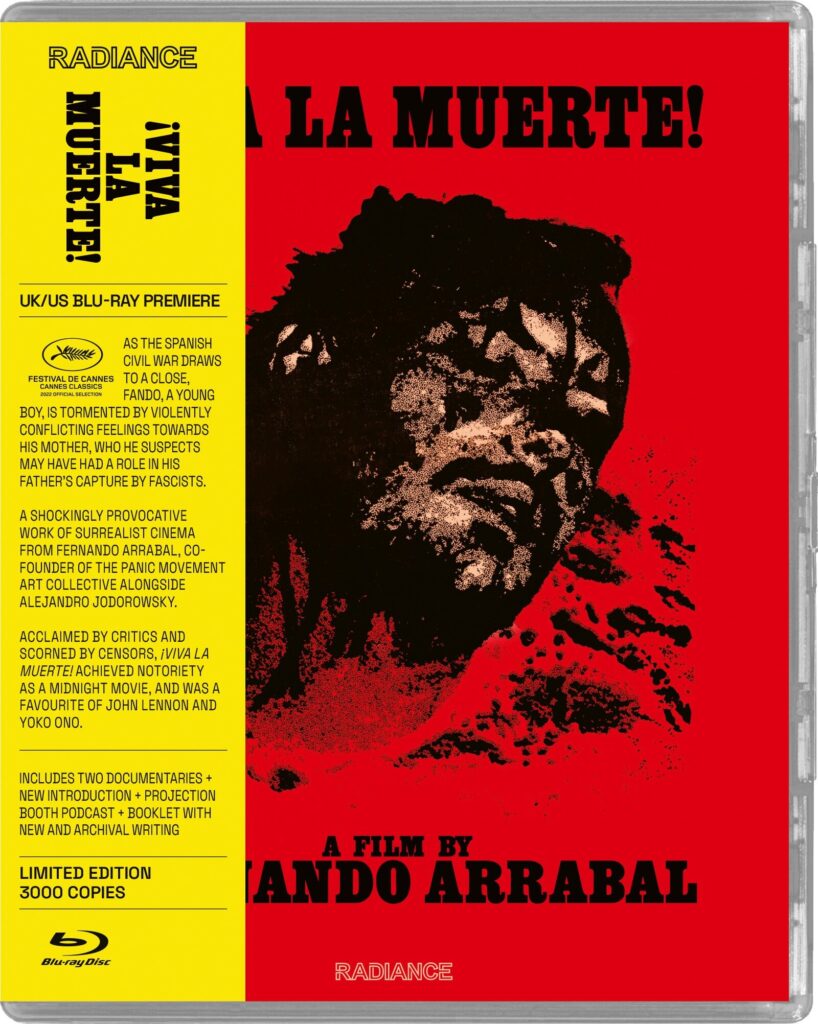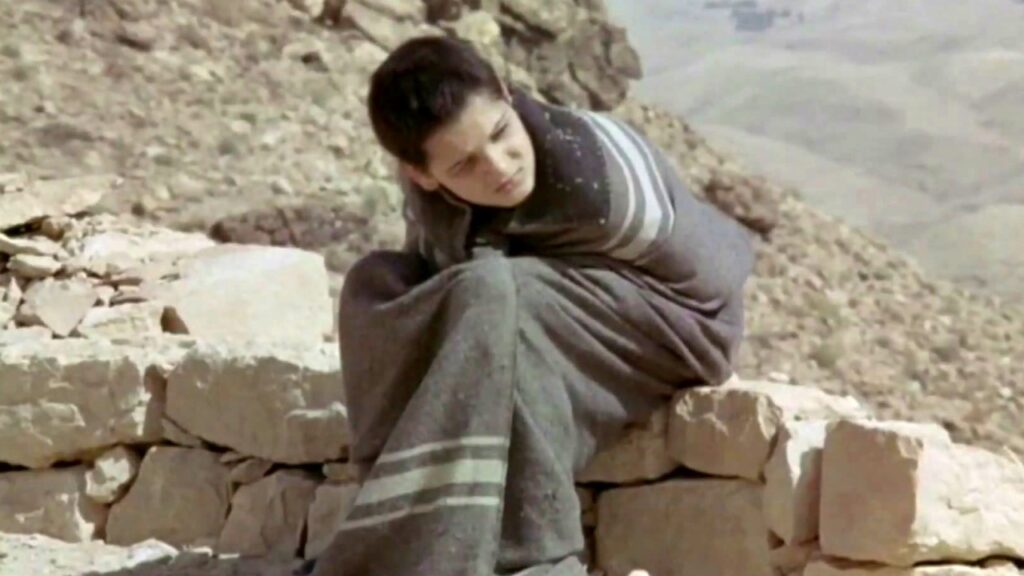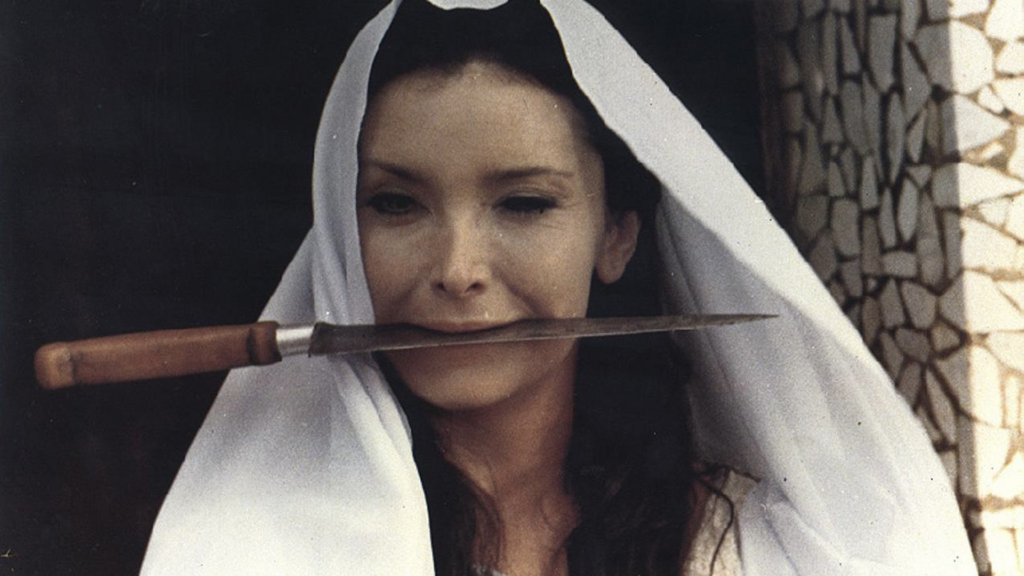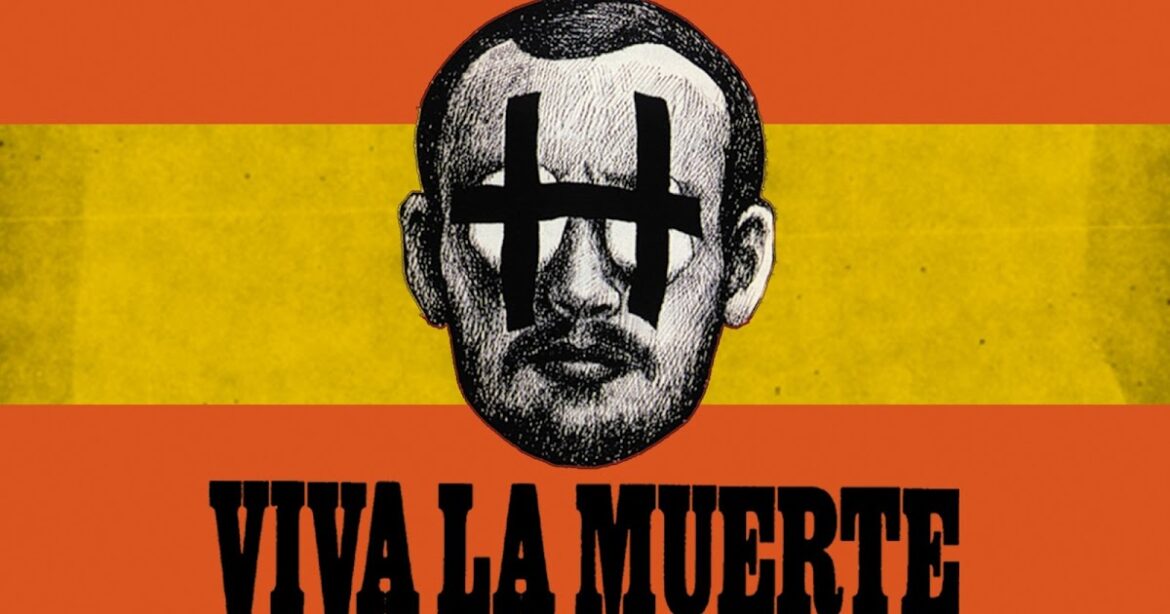Out now is a remarkable, remastered Blu-ray (from Radiance)- director Fernando Arrabal’s 1971 surrealist masterpiece Viva La Murete.

Fernando Arrabal (who turned 92 this year) is a Spanish author, poet, playwright (he’s written over 100 plays), artist and filmmaker. Along with Alejandro Jodorowsky (El Topo) and Roland Topor (Fantastic Planet), they co-founded the “Panic Movement” dedicated to shock and outrage in their art, and heavily influenced by Luis Bunuel and Artaud’s “Theater of Cruelty.” As Roland Topor envisioned- an aesthetic of “blood, shit & sex.”

The film opens in North Africa at the end the Spanish Civil War. A young boy- Fando (Mahdi Chaouch) is at the side of the road wrapped in a blanket in an arid, bleak landscape as trucks with armed soldiers roll by on the road with loudspeakers blaring, “Traitors will be relentlessly tracked down. We will kill half the country if necessary. Long live death.” Described by Arrabal as “a scream from my guts,” the film is from a child’s point of view, navigating his post-War world- his fears and nightmares and worrying what has become of his father. To Fando’s horror he realizes his beautiful mother (Nuria Espert) has turned her husband over to authorities for his political beliefs. He is either in jail or executed. He can never get a straight answer out of his mother who even lies to him by producing what she claims is the broken favorite pipe of his dad, all that was left after his execution. But Fando has his father’s “plum pipe,” and gazes at his mother is disbelief and fury.

The movie weaves in solarized color sequences of Fando’s nightmares of his father’s fate. These fantasy sequences are awash in red, green, yellow or orange. In one, his father is buried in the desert with only his head showing as soldiers on horseback race towards him, the hooves violently battering his head.

Fando’s only friend is a pretty young girl Therese (Jazia Klibi), who wanders the streets of her village with a turkey on a leash. The brutality of Fando’s childhood- harassed and beaten by other children chanting about his traitorous father, or being tormented by nuns teaching at school or scolded by priests (the Catholic Church was complicit with the rise of fascism at the time and Arrabal relentlessly attacks).

Fando’s mother is the main focus of the film and the boy watches her with a mix of love and fear. There’s also an underlying Oedipus complex as Fando spies through a keyhole while his mother slips out of her dress in the heat and fans down her naked body. Fando is stroking a lizard while spying on her and then bites off the reptile’s head at the end. Cruelty to insects and beasts permeate the film. In one grotesque sequence his mother writhes around in the blood on the floor of a slaughterhouse, and then proceeds to sew up her son (as an adult) in the carcass of a cow. Arrabal, like many of the other surrealists used shock tactics in their movies to unsettle and confront their audiences. The director even throws in the execution of the poet Federico Garcia Lorca, which occurred years later and certainly not in North Africa.

It’s a lyrical, strange, brutal film that ended up relegated to midnight screenings in America when it was released or showings in rarified arthouses. A friend dragged me to the Bleeker Street Cinema to see it and the movie horrified and thrilled me. There’s a Hieronymous Bosch quality to it- especially the frightening drawings shown during the final credits. I never forgot the film, and this 4K Blu-ray restoration is astonishing. It has audio commentary, a feature-length documentary on Arrabal featuring interviews with friends and family. There’s an interview with Spanish cinema scholar David Archibald and an insert with expert essays including “The Surreal and the Violent: The Unique Construction of Fernando Arrabal’s ‘Panic” Theater” by Sabina Stent. Re-watching after all these years was a fabulous relief- the film still stuns the senses. It’s shocking and yet uniquely beautiful.



I loved this piece . . . your enticing description of the film, the notion of “Theater of Cruelty” and its connection to the tortures of the Spanish Civil War. Bravo, Dennis!
Was there ever a double bill of Salo and Viva La Muerte?